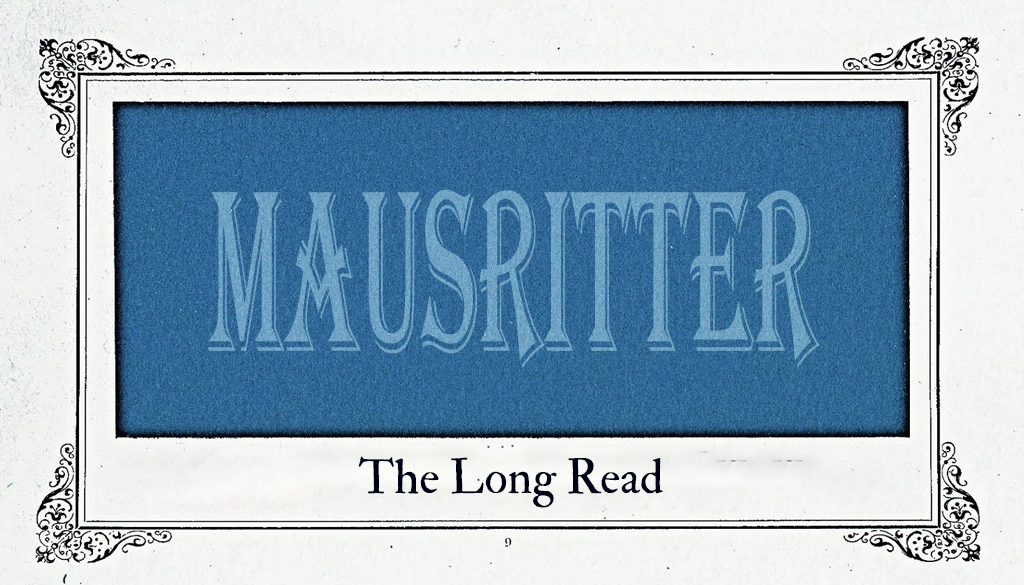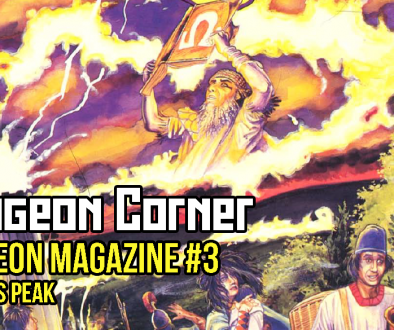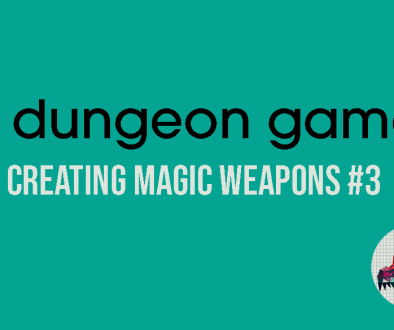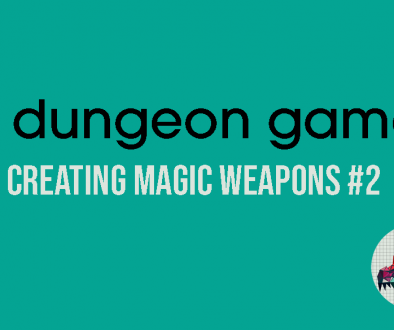The Long Read: Mausritter
This is a mirror of this Twitter thread, which was written in real time as I read Mausritter. It hasn’t been edited in any way. You can pick up Mausritter from Itch.io, or pre-order the new print edition through BackerKit. You can also leave a tip at Ko-Fi if you like this kind of content and want to see more of it. This post isn’t affiliated with or sponsored by Mausritter/Losing Games or Games Omnivorous in any way. Thanks for reading.
Okay then. It’s that time.
Mausritter. Let’s go.

If you’re new to the party, here’s what’s about to happen.
I’m going to read Mausritter, and I’m going to tweet my way through it. This isn’t a review. It’s just me reading a game for the first time and talking about how I feel about it.
I may meander. I may get things wrong. I may not like things that you like, and vice versa. That’s okay. Don’t be a dick about it.
Here’s what I know about Mausritter going in to this:
It’s “sword-and-whiskers” role-playing. You play mice – and maybe other small furry creatures? I think just mice but I could be wrong – in a big, scary world. You have adventures.
That’s it. That’s all I know. I know that it interested me enough that I’ve accidentally bought it twice. This is a genre I like a lot. Watership Down and The Animals of Farthing Wood were very formative for me. I’ve got signed copies of a ton of the Redwall books. I think “small animals in a big scary world” sits alongside “tiny people in a big scary world” quite comfortably, and I have a deep and passionate love for The Borrowers as well – so much that I wrote a game based on it 18 months ago. I haven’t played many games in this genre, though. I’ve played two sessions of Mouse Guard and… That might be it, actually.
So this will be new to me, but I’m already primed to like it. The other reason I’m primed to like it is because it’s a boxed set.
I grew up in the TSR era of AD&D 2nd Edition and to me, box sets = RPGs. My first ever experience of D&D was the First Quest box, and some of my favourite memories are of going to the tiny hobby shop in Wigan and grabbing whatever box set they had that I could afford. I didn’t even care what it was most of the time. I still own 90% of them. So, that’s all the pre-amble out of the way. Let’s dive in. Holy shit this is gorgeous, and it tells me so much about the game already.
@GamesOmnivorous always publish beautiful stuff but wow. This is something else.

I’m excited.

I love a ludography. I actually haven’t read Into The Odd but it’s interesting to know it’s effectively a hack. Knave inventories are great and the item cards make a lot of sense now.
I also didn’t realise that Isaac did all of the art himself as well as writing this. Amazing.

Splitting the columns into ‘all the player stuff’ and ‘all the GM’ stuff is a really nice little touch. Not something that I’d notice if it wasn’t there but it IS there and I like it.

Also I’m seeing the word HEXCRAWL and holy shit yeah I’m excited. Hexcrawls on the scale of mice are great fun. So I’m looking forward to getting to that point.
Also there’s magic in this game but it only takes up a page? Interesting. You really can tell a lot from a table of contents. There’s a section on recruiting hirelings and warbands. That’s some proper old school stuff. I’m into it. The basic premise of the game is less Mouse Guard and more OD&D. You’re setting out into dark and dangerous places to wrest wealth from the guts of an old world. Literally my favourite genre of game…with mice.

We get a fairly standard “what is an RPG?” section that I usually don’t think indie games need because its unlikely that people who don’t already know what RPGs are will pick up something tiny, but I think Mausritter gets to have one. Thematically this is the kind of thing someone might buy as a present for their kids without knowing much about what it is, especially if they see the box set rather than the book.
Know your audience and write for them, is what I’m saying. Character creation is RAPID – and is made even faster by the URL (and QR code!) printed at the bottom of the page. That’s such a nice touch.

Your HP cross referenced with your pips tells you your Background, which also includes some starting equipment.
We also get some balancing happening, with extra items for characters with low stats. You know what? This is fast enough that I’m going to make a character. Especially as the game handed me sheets and a pen. Give me two minutes to dig out some dice.
(Dice in the box would have made it perfect, but whatever)
It took me a minute to get dice because it involves going up stairs and my legs are screaming at me from the run earlier, but we have a character.
And the sheet is telling me some things, too.

And what are banked items? So much to find out! Anyway I’ve rolled a strong, dextrous Fishermouse. Because they’re born under the Star they’re reckless and brave, and their blue coat is covered in scars that reflect this.
I just wish there was a name table to roll on as well, because I’m bad at names. The next section tells us how inventory works and it’s very straightforward. You can freely swap items between your paws and your body, and items in your pack take time to retrieve under pressure (requiring an action). I can’t remember what game I saw do damage to the inventory, but it’s a mechanic I love. Characters gain Conditions, and these take up an inventory slot until they’re cleared. If you’re carrying more items or conditions than you have slots for, you’re encumbered. When you’re encumbered you can’t run, and you make all saves with Disadvantage.
And this is my first criticism, because we’ve gone from a “what is an RPG?” section that assumes this might be your first game to a term like Disadvantage with no explanation in the space of 4 pages
But maybe it’s explained later. We’ll see. (Obviously I know what that means, please don’t explain it to me in the replies). We also have usage dots for equipment, and weapon breakage.
I… Don’t traditionally like weapon breakage in games, but I feel like a game where you’re mice using weapons made of pins and thimble armour it’s actually pretty thematic. Isaac is here and now I’m very nervous about reading this game publicly.
But also there’s a name table in brhe back of the book!
My little dude is called Juniper Butterball and holy shit I love him
We have weapons and armour, and my favourite thing – Improvised / Light / Medium / Heavy and implied permission to just… Decide what that looks like for your character.
Electricity exists in Mausritter and that is an interesting bit of information. That has ramifications for the kinds of adventures you can build, and it’s just hidden in the equipment page.
Love. It.
I genuinely love these Best Practices. They tell me that this game is basically built for me and that’s always fun to discover.
I particularly like “Dice are dangerous. Clever plans don’t need to roll.” and “Fight dirty. Run. Die. Roll a new mouse.”

Your HP is “Hit Protection” and you take damage to that first. Then, once it’s gone, you start taking STR damage. Every time you take STR damage you make a STR save to keep fighting – otherwise you take an Injured condition and go down. Once you’re down (and Incapacitated) you need to be tended to by an ally and take a short rest. If you’re left unattended for 6 exploration turns, you’re dead.
You also die if your STR ever hits zero. (also, sneaky move sliding the reference to Exploration Turns in there)
One thing I love about small games is that you never need to wait long to have your questions answered. The very next page tells us everything we need to know about measuring time – we have combat Rounds, exploration Turns, and Watches for traveling. I miss the Round <= 1 minute, Turn = ~10 Rounds dichotomy. I’ve never got on with 6 second rounds, especially as games that use them tend to take longer about combat than games that don’t. It’s weird that the fictional combat is faster when it’s slower at the table. Treasure as XP is both an old classic and something that leads people to say “you incentivise violence because you kill things and take their stuff”.
Making it about finding treasure AND useful stuff for your community, and tying XP to spending pips selflessly, is really nice.
I really like Grit. It makes complete sense fictionally for experienced mice to be more resilient to conditions.

But my favourite things are the ways you recharge depleted spells. The requirements are super fun and make great adventure hooks. The requirement for Invisibility is “Go a day without opening your eyes once, while holding the spell.” THAT’S SO GOOD.
Or Ghost Beetle: “Bury in a beetle graveyard for three nights”.
Sounds easy, but what else is in a beetle graveyard? What might be digging around? The phrase “a pair of helping paws” just melted me.
Anyway we’re on to hirelings. I don’t have much to say about this section tbh.
You can hire mice. They have morale and if you treat them badly they’ll abandon you.
You can also form a warband, but you need to be a rich mouse to do it. I really like the phrase “warband-scale creatures” to refer to things like cats and boars and I think we should port that back into dragon games for things like… well, dragons. This single page about Warbands and Construction does a lot to tell you about what kinds of games you might be expected to play in Mausritter. We start off small, killing things and earning money and getting stronger, as expected
But the game definitely points at raising armies and constructing new homesteads for yourself and says, “This is possible, should you live long enough and gather enough power and wealth”. And that’s fun. Weirdly, domain play never interested me when I was growing up playing D&D, but the second you tell me I can build a little mousey empire I’m SOLD
The example of play is really good. It does a great job of conveying the style of play Mausritter expects – doing smart things to negate the need to roll, getting the drop on enemies, and running away when things go bad – while showing off the mechanics. A bad example of play is worse than no example of play. A good example of play is priceless. And that brings the player-facing section of the book to a close. I feel like it gives you more than enough to be able to play the game, so I’m interested to see what’s in the GM section.
The best practices section is nothing new if you’re used to OSR style games but, as with the rest of Mausritter, it’s written clearly and concisely and I can see how it’s useful for people not used to these kinds of games (see my tweet about 5e play culture last week)
One thing I’m noticing is that there are a few additional resources linked to – like the turn tracker – that it would have been really nice to have in the box. But that’s a tiny criticism and it’s not at all detracting from my enjoyment of the game so far.
I knew we would, but we have a bestiary in the core rulebook.
The only warband scale enemy in the book is a cat, which tells me that although warband rules are there you’re not necessarily expected to ever engage with them. I almost feel like they’re there because you can’t write a game about mouse without including cats. The selection of enemies is limited but it’s really cool, and there’s enough variance in the creatures that
A) you could run a good game without ever straying from them, and
B) you’ve got enough examples that making your own creatures should be really easy
I really like that instead of lots of abilities and things they can do, creatures instead have an alternate Critical Damage effect – so it only comes up when things are going poorly for the mice. That’s really neat. I like that the game just says, “You’re going to be doing a hexcrawl”.
The advice is to start the campaign at the door to an adventure sight, have the adventure, then show the players a blank map with the dungeon and home marked on it and say GO.
It’s good, fun advice.
You also get some really good guidance for populating a hex map if you need it, and a nice table of landmarks and details about them. The tools for building out the world here are really good. In fact, the back half of this book is mostly given over to very good tools for building both hex crawls and adventure sites within those hex maps. The example hexcrawl – The Earldom of Ek – is great, as is the adventure site Stumpsville. To close things out we get treasure tables, trinkets, and magic (and cursed) swords, followed by a ton of useful tables like names, NPC generators, adventure seeds, gear lists, and a quick reference for the rules. And that’s it! It’s small and concise – as you’d expect from a game about mice – but it does a great job of packing pretty much everything I love about OSR dungeon games into a game about brave little mice. I really like that it doesn’t really make any assumptions about the tone of your game. You could just as easily run Scampering Hijinks as Dark Gritty Dungeon Delving using the stuff in the book with no changes. This is one of those games where it’s not necessarily doing anything new or particularly unusual – and it’s quite open about that, citing influences and sources at the beginning – but what it does is package all those elements up in a way that’s novel and makes me excited to play
I have very, very minor criticisms that I’ve touched on in the thread but all in all I really enjoyed reading this and I can absolutely see a future where I play a lot of it and enjoy every minute of it. I think I remember seeing that there’s a Kickstarter coming up for a new edition or a new printing of Mausritter (Isaac, if you’re still reading, feel free to chime in here) and if that’s true then I’d highly recommend picking it up.
Anyway, thanks for reading. It’s been nice to dip into something that isn’t 600 pages long today.
Enjoyed this post? Buy me a Ko-Fi!





The Luck Roll has Changed the Game – stuartwatkinson.com
January 19, 2023 @ 5:46 am
[…] I’ve been staying at a holiday home on the coast this week. My little family and another little family. Four adults and two little people. It is probably unsurprising that with two babies who don’t love sleeping in the house we didn’t have a lot of spare time for gaming. Which is what the four adults used to do all the time when we got together. But, we managed to steal 50 mins here and 40 mins there to play some Mausritter. This is a not review or detailed look at the game, just an aspect of it. If you want more details about the game you can grab it here or read this read-through by Chris Bissette. […]